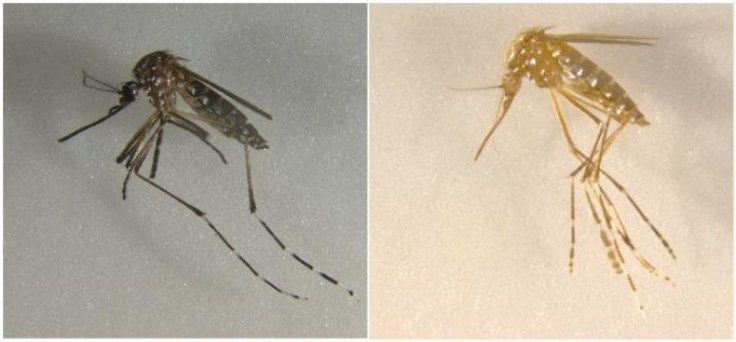Yellow, Three-Eyed, Wingless Mosquitoes Created Using CRISPR Gene Editing Tool

A team of researchers from the University of California, Riverside, has successfully developed a type of transgenic mosquitoes with the Cas9 enzyme embedded in their germline.
The addition of Cas9, which acts as a pair of "molecular scissors" that can cut the two strands of DNA at a specific location in the genome so that bits of DNA can then be added or removed, will enable the use of the CRISPR gene editing tool to make efficient, targeted changes to the mosquitoes' DNA.
The researchers proved their claims by using the CRISPR gene editing tool to disrupt "cuticle, wing, and eye development, producing completely yellow, three-eyed and wingless mosquitoes."
This, they said, represents the first step toward using gene drive systems to control mosquito populations and reduce the diseases they spread.
The study, published in the journal Proceedings of the National Academy of Sciences (PNAS), was led by Omar Akbari, an assistant professor of entomology in UCR's College of Natural and Agricultural Sciences and a member of the university's Institute for Integrative Genome Biology.
A press release on the UCR's website quoted him as saying, “These Cas9 strains can be used to develop split-gene drives which are a form of gene-drive by which the Cas9 and the guide RNA’s are inserted at separate genomic loci and depend on each other for spread. This is the safest way to develop and test gene drives in the laboratory to ensure no spread into the wild.”
The team is aiming at using Cas9-expressing mosquitoes together with another technology called gene drives. This will cause the mutations to spread and also avoid the resistance to reproduction that the mosquito will display toward mutated mosquitoes that evolution would typically favor.
Aedes aegypti are major carriers of diseases like dengue, chikungunya, yellow fever, and Zika virus. The team feels that the insects are rapidly becoming resistant to commonly used pesticides.
Low mutation rates in mosquitoes’ cause a poor survival rate for the modified mosquitoes. This hampered previous attempts to genetically control pest numbers.
To counter this inefficient transmission of disrupted genes to offspring, Akbari and team used developed transgenic mosquitoes that already have the stable Cas9 bacterial enzyme in their germline. The team found that this enabled them to edit genomes very efficiently using the CRISPR system.
"The CRISPR editing tool works like a pair of molecular scissors, cutting out and replacing specific DNA sequences based on a ribonucleic acid (RNA) guide. In the paper, the team used the system to disrupt genes that control vision, flight and feeding, resulting in mosquitoes with an extra eye, malformed wings, and defects in eye and cuticle color, among other changes," said the release.
This helps the team control the gene drive and spread mutations instead of letting it die down.
"These Cas9 strains can be used to develop split-gene drives which are a form of gene-drive by which the Cas9 and the guide RNA's are inserted at separate genomic loci and depend on each other for spread. This is the safest way to develop and test gene drives in the laboratory to ensure no spread into the wild," Akbari added in the release.
These gene drives greatly increase the odds of a gene passing on to offspring. The study found that the odds went up from 50 percent to 99 percent. This number can potentially increase to 100 percent when a target gene is disrupted in multiple sites. To better these odds, the team has come up with a technique called multiplexing that has been mathematically modeled to propagate the mutations better.
"Next steps should be undertaken to identify the regulatory sequences that can be used to express the guide RNAs from the genome, and once these sequences are identified developing gene drives in the species should be turnkey," Akbari added.
© Copyright IBTimes 2025. All rights reserved.





















